Bathe in the waters of a rare Japanese onsen temple steeped in over 1,000 years of history
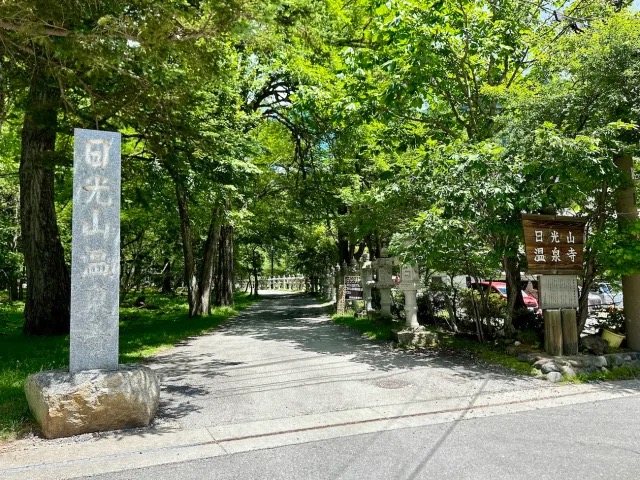
Escape the crowds of tourists at Nikko with a visit to this hidden gem.
Nikko in Tochigi Prefecture is known for its natural beauty and World Heritage-listed temples, one of which is home to the famous three wise monkeys, but it’s also home to a rare hot spring temple that often gets overlooked by tourists.
Called Nikkozan Onsenji, this is a temple where you can bathe in hot springs, and it’s an annex of Nikko’s World Heritage-listed Nikkosan Rinnoji Temple. Located in Okunikko Yumoto Onsen, this hot spring has a history that stretches back to 788, and our reporter Masanuki Sunakoma took advantage of a recent day off to head out to the onsen so he could soak in its waters.
▼ First, though, he soaked in the scenery as he walked along the shaded approach to the temple, which was lined with stone lanterns.
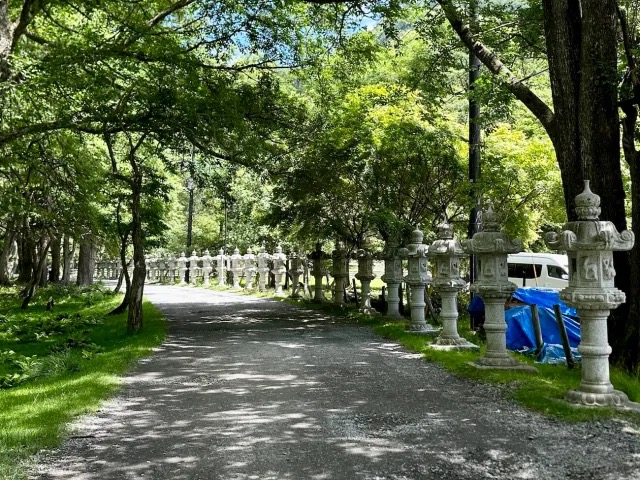
Masanuki ended up following a group of guests to the temple building, where he discovered there was a sutra copying experience available, for 1,000 yen (US$7) per person.
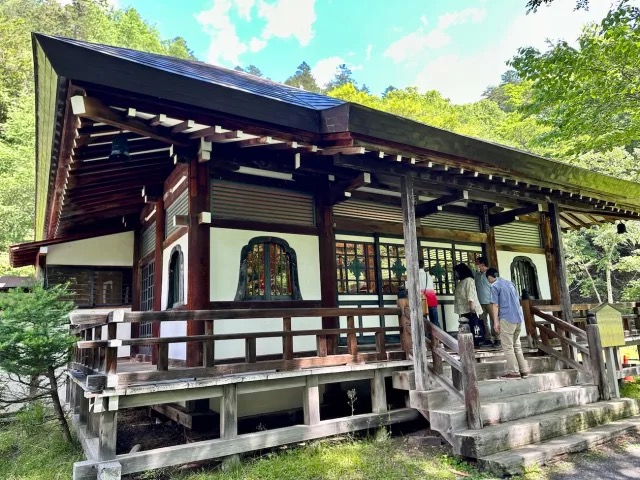
Figuring this would be a great way to ease himself into the zen-like surroundings, he signed up and took a seat, emptying his mind as he used a calligraphy brush to trace over 16 characters from one section of the Yakushi Sutra.
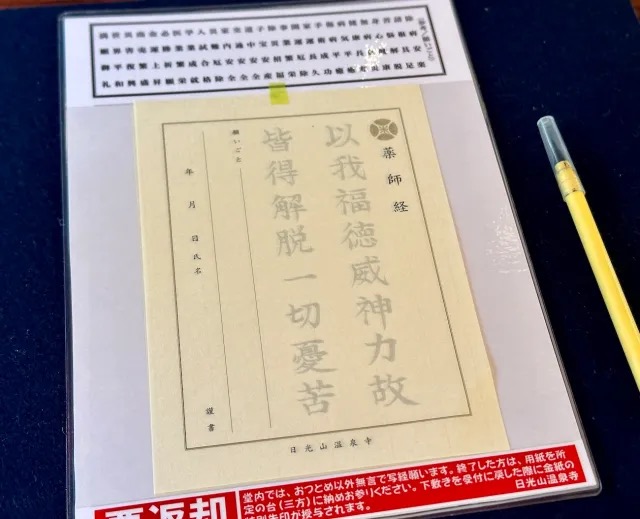
The passage translates to “You can escape from all sorrow and suffering with the great good fortune of Yakushi Nyorai.” It’s said that if you trace each letter with all your heart, your mind will naturally calm itself.

Those who leave their traced sutra in front of the altar will be given a special golden goshuin (stamped paper), marked with the date and the name of the temple.
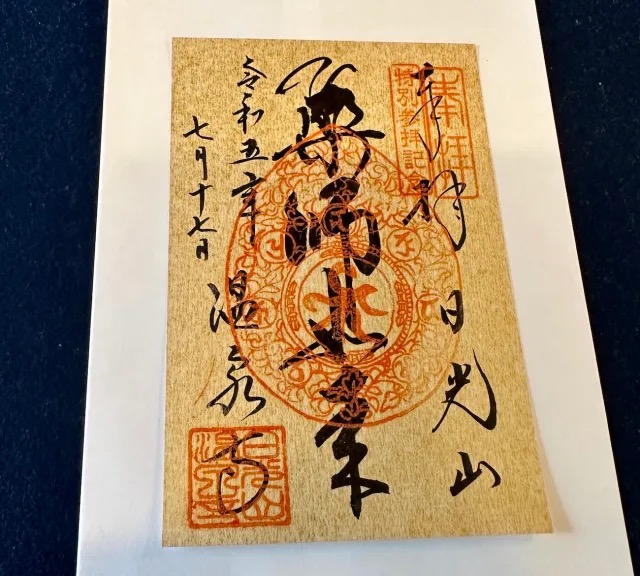
Masanuki tucked his goshuin carefully into the pocket of his bag and exited the building, proceeding to the hot springs, which goes by the name Yakushi-yu.
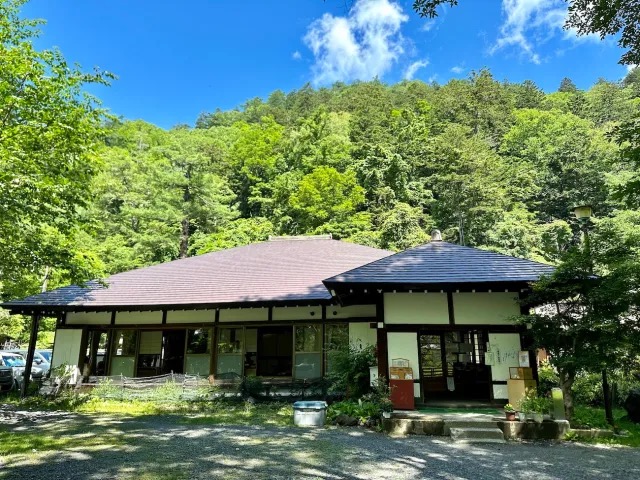
The hot springs building also serves as the temple office, and its interiors will take you several decades back in time. The gender-separated bathing facilities here are just as rustic as the building, and the hot spring itself dates back even further.
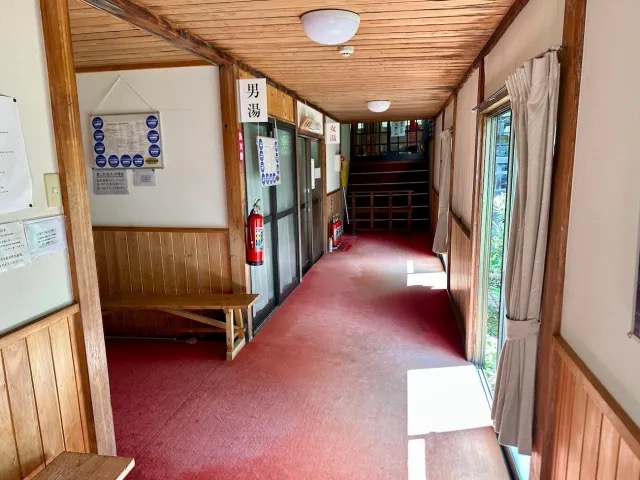
▼ The entry to the men’s bath.
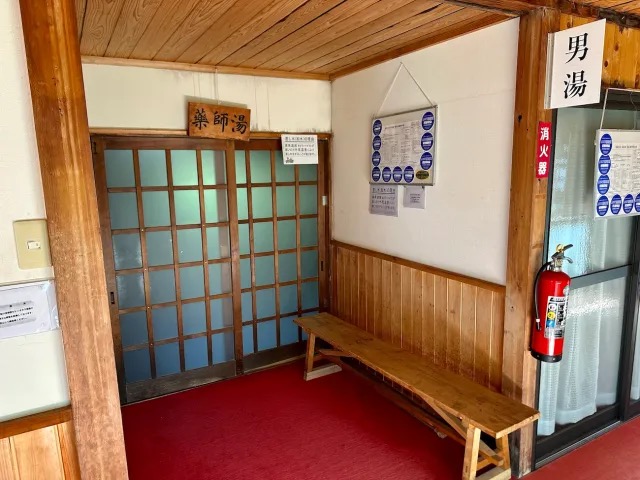
Back in the Edo period (1603-1867), these hot springs were closed to members of the general public, so Masanuki felt a rush of excitement at being able to soak in such exquisite waters. Unlike a lot of modern hot spring establishments, though, this onsen doesn’t rent out towels, so you’ll need to remember to bring one with you when you visit.
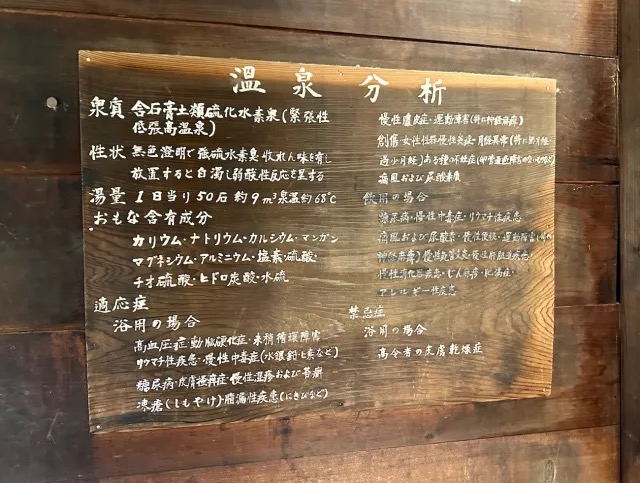
After undressing in the changing room, where Masanuki was able to learn more about the effectiveness of the hot springs by reading the wooden board above, he proceeded to the bath itself, which made him smile in delight.
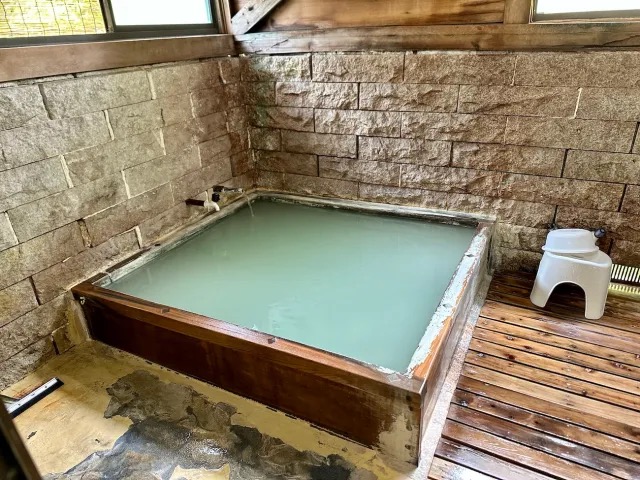
Not only was the bath overflowing with rustic beauty, it was overflowing with beautiful milky green water, and to cap it all off, he had the whole place to himself. The water here is emerald green at its source, turning milky white when exposed to air, giving it an almost otherworldly feel.
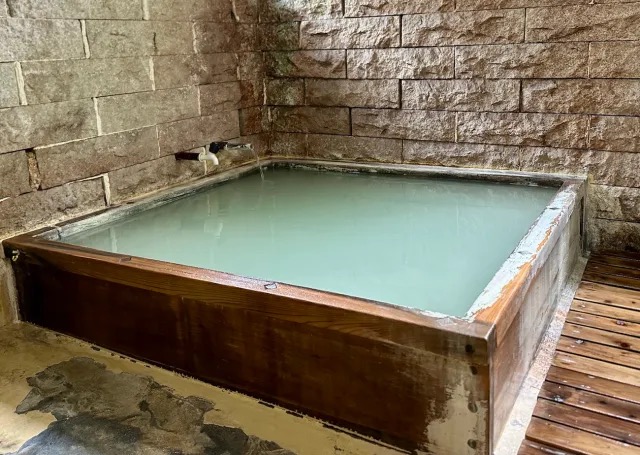
The water is hot, so you’ll want to be careful by slowly introducing your body to the extreme temperature — don’t throw a bucket of water over your shoulders first thing. The high percentage of sodium sulphate in the water is said to have skin-smoothing properties, and Masanuki could feel the effect as he slowly slid into the bath and allowed the water to work its healing powers on him.
▼ After his soak, Masanuki felt totally rejuvenated as he got dressed and headed out along the corridor to the relaxation area.
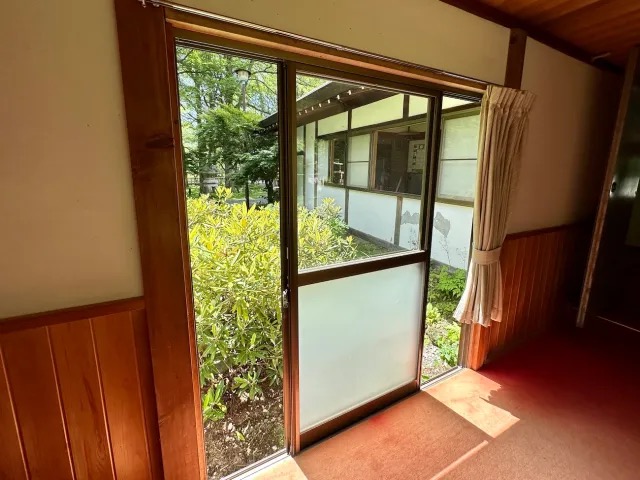
At the relaxation area, he was able to enjoy tea and Nikko Jingoro rice crackers, a local specialty of the region, while cooling off and enjoying the view. The laid-back atmosphere and retro feel of the building made him feel like he was visiting his grandma’s house in the country during summer vacation.

▼ The simple refreshments reminded him of his grandma’s house too.
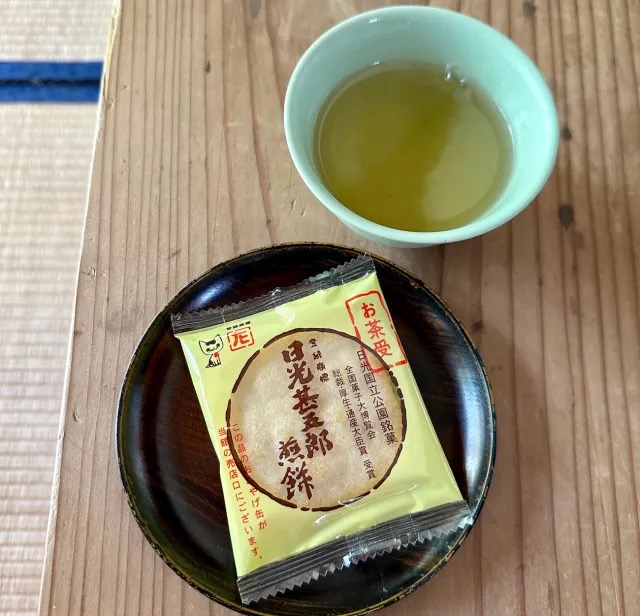
▼ Totally refreshing!
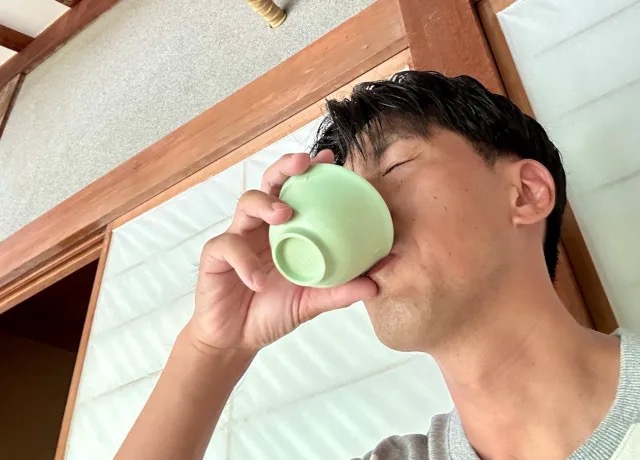
Before making his way back to the hustle and bustle of Tokyo, Masanuki had one more place to visit — Yunodaira Marsh, which is the source of Nikko Yumoto Onsen, located near Onsenji Temple.
▼ The marsh is just a four-minute drive from the temple.
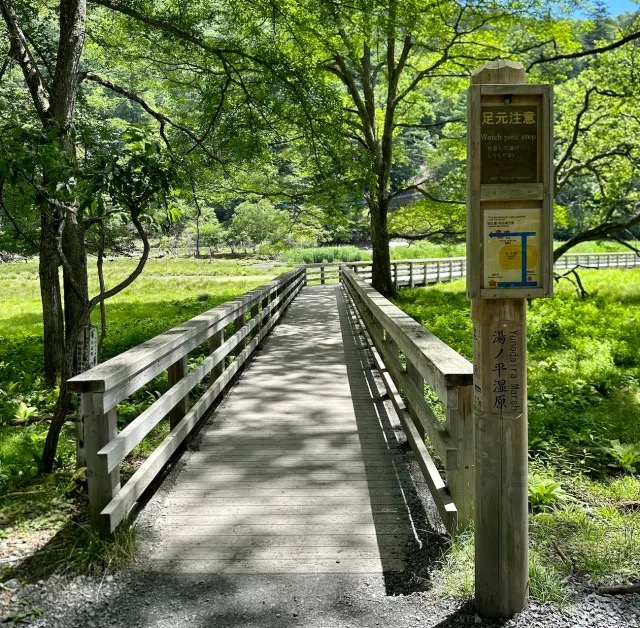
A path made up of wooden planks stretches out into the wetland, taking visitors past a series of hut-like structures. These structures are used to conceal unsightly pumps that draw water directly from the hot springs that gush from the ground here.
▼ This is where the Yumoto Onsen region sources its hot spring water.

Because hot springs gush out from this wetland, it doesn’t freeze in winter, which means you can see many animals stopping by here throughout the year. The smell of sulphur hangs thick in the air, but it’s an amazing place that makes you stop and realise the beauty, wonder and power of Mother Nature.
So if you’re looking to go on a day trip while visiting Tokyo, it’s worth adding Onsenji to your itinerary. It’s a beautiful place to relax and rejuvenate your body and soul, and if you’d like to venture further from the tourist path, there are even more sites in Tochigi to explore.
Temple information
Nikkozan Onsenji / 日光山温泉寺
Address: Tochigi-ken, Nikko-shi, Yumoto 2559
栃木県日光市湯元2559
Open: 8 a.m.-5:00 p.m.
Closed: End of November to end of April
Bathing fee: 500 yen (adults), 300 yen (children)
Website
Photos © SoraNews24
● Want to hear about SoraNews24’s latest articles as soon as they’re published? Follow us on Facebook and Twitter!
Credit:

0 comments:
Post a Comment